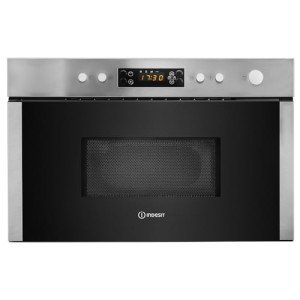A Built in Microwave Oven Combo Offers Convenience and Versatility
A microwave oven that is built-in incorporates your wall oven and your microwave into a single appliance. They can save counter space and give your kitchen a stylish look.

These models feature powerful broilers that cook evenly and microwaves that heat food quickly. These models offer a range of cooking options for different foods.
Size
Combining the convenience of a microwave oven and the flexibility of a wall oven, a built in microwave and wall oven combo is a practical solution for kitchens with a variety of styles. Explore our range of wall ovens with combination microwaves to find the perfect one for your home. Be sure to read the cutout specifications and installation instructions for your chosen unit to ensure it will work in your space. Our microwave and oven sets include both microwave and oven models with a variety of colors, styles and finishes that will match any decor. Also, look for features like intelligent and easy-to-use digital controls, a power-cook function, and built-in self-cleaning options that will help you reduce time.
Convenience
A microwave oven with built-in features can save counter space and make your kitchen appear more modern appearance. It can be used to heat leftovers, frozen food, and pre-packaged foods. It eliminates the necessity for separate countertop appliances or bulky wall ovens. If you want to upgrade your home without having to undertake major renovations the combination microwave oven is a great option.
please click the following article can find microwave oven combos in a variety of designs to fit your kitchen's decor. Some microwave oven combos have doors that swing out right to left and others have drop-down designs that open the same way as traditional ovens. You can also purchase microwave ovens that open inside a drawer, like a cabinet. The microwave drawers can be easily reached and are great for small space.
Combination microwaves are also equipped with a variety of features that can simplify meal preparation and make it more efficient. Some models feature sensors that allow you to steam your food. This feature adjusts the temperature and duration of your food in order to ensure you get perfect steaming of your fish and vegetables. Other features include a broil feature that lets you quickly melt cheese or cook your favorite food and Crispwave(tm) technology that can grill, bake and crisp foods.
Consider how often you will make use of each feature when choosing a microwave oven combo. If you'll use the oven component of your combo more than the microwave, you might be better off with an oven with two walls instead. A combo oven is smaller in capacity than a standalone oven.
Once you've decided on a microwave and oven combo to meet your needs, consider the installation process. Over-the-range models are mounted over your cooktop or stove and plug into an electrical outlet, whereas built in microwaves are installed directly into the walls or cabinets of your kitchen. Some models even have trim kits that let you effortlessly match your new microwave with the cabinets in your kitchen.
Energy Efficiency
A built in microwave oven combo is a great space saving option for those with smaller kitchens, regardless of whether they are in a house or an apartment. They can save on the space in cabinets that would be occupied by two separate appliances, and they can also help reduce energy consumption. They generally provide the most efficient cooking method than traditional wall ovens because they use less energy. Additionally, they can usually be used to cook warm and hot dishes, reducing the necessity for additional appliances such as toasters or warming plates.
In evaluating the possibility of amending energy conservation standards, DOE conducts several analyses that include assessment of technology and market, screening analysis, engineering analysis and a national impact analysis (NIA). For this SNOPR, DOE will rely on its current engineering analysis of microwave ovens to determine the highest efficiency improvements that are technically feasible for this product category.
DOE will compare the microwave's design to an energy performance objective that is specified in the engineering analysis. The engineering analysis will then determine the maximum improvement in energy efficiency that is technologically feasible based on the most advanced microprocessor-controlled model available on the market or in working prototypes, or the maximum reduction in energy consumption that is technically achievable with the current technologies available for this product class.
As part of the NIA, DOE will evaluate the impacts on consumers for each product category including lifecycle cost savings and simple payback periods ("PBP"). DOE will utilize the Government Regulatory Impact Model, with an adaptation for ovens that can be microwaved, to calculate the industry net present value (NPV).
DOE will also examine the impact on manufacturers and will use an altered industry cash flow model that is specifically tailored to this type of product to estimate manufacturing NPV. DOE will also examine the impacts of these plans on small-scale businesses as well as other manufacturing subgroups to determine those that may be disproportionately affected.
DOE will also look into whether the test procedure for microwave ovens requires to be revised to include active mode power consumption as well as an energy use measurement. Currently, the test procedures only deal with the standby mode power usage.
Design
Wall ovens rely on the circulation of hot air evenly while microwaves use waves to cause water molecules in food items to vibrate and generate heat. Combination wall units blend these two appliances into one unit, reducing space in the kitchen and offering a sleek modern aesthetic. But you need to carefully take into consideration your budget and goals before investing in a combo wall oven. Many of the combination wall ovens that we've rated have issues with performance or design.
